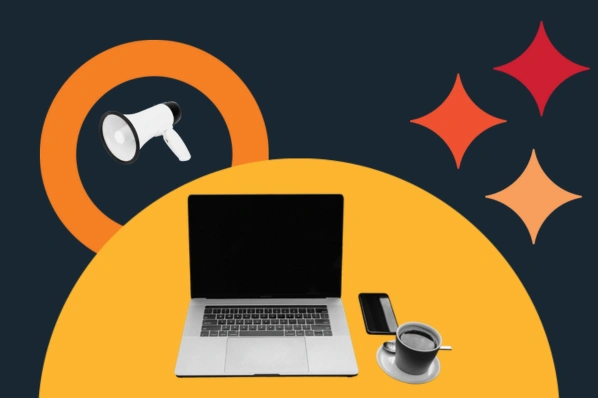With a recession incoming and seasonality impacting website performance, many marketers have questions about what they can do to boost their site, so it succeeds in 2024 and beyond. According to HubSpot's early Q4 findings, website traffic has decreased across all industries, year over year and month over month. It's more important than ever to tackle site performance challenges head-on.

In this post, we'll walk you through seven top site performance challenges.
What are the top 7 site performance challenges?
- Still not prioritizing responsive design.
- Heavy website design.
- Hosting issues.
- Network latency problems.
- Outdated themes and plugins.
- Slow page load time due to unoptimized visual assets.
- Too many HTTP requests.
1. Still not prioritizing responsive design.
We probably sound like a broken record — but if you're not prioritizing responsive website design in 2024, you're isolating the lion's share of potential consumers. As of November 2022, most global website traffic originates from mobile devices (59%). If that weren't enough, 88% of online shoppers would not return to a website once they've had a poor user experience.
The stats don't lie: If your website doesn't look visually appealing and function seamlessly regardless of the size screen your visitors are using, you'll isolate many potential customers.
By incorporating responsive website design best practices into your site, you can rest assured that users will experience a mobile-friendly visit that won't leave them feeling frustrated with your site or disenchanted with your company.
You can check out our comprehensive guide here if you're interested in learning more about responsive website design.

2. Heavy website design.
The lighter weight your website is, the better. Why? Because the lighter the website, the faster it is. There are a variety of reasons why having a lightweight website is beneficial for your business. For one, visitors favor faster digital experiences. An Unbounce survey even revealed almost 70% of consumers state that page speed impacts how willing they are to purchase from an e-commerce retailer.
And speed isn't only valuable to consumers but Google itself. Google considers load time so that a lightweight site could make a difference in your search engine optimization (SEO) success.
Because heavy website design is a primary site performance challenge, you risk losing many consumers if you don't prioritize creating a lightweight website as we advance into 2023.
3. Hosting issues.
Selecting the right hosting provider is no easy feat — but it should be your company's priority. If you choose an ineffective hosting provider, your site could be vulnerable to security issues, frustrate visitors with slow page load speeds, and, worst case scenario, experience crashes that could seriously impact consumer perception of your brand.
If you've previously experienced hosting issues, 2023 is the perfect time to find another hosting provider that will offer the services your website needs.
Selecting a solid hosting provider could prevent several site performance challenges, such as slow load time and security vulnerabilities. If you need help figuring out where to start sourcing the right one for your site, check out our guide to selecting the right website hosting provider.
Here are a few things you should keep in mind when picking your hosting provider:
-
Do you anticipate any traffic spikes? If so, be sure you pick a plan that can support this — otherwise, you might deal with unexpected site crashes.
-
Can the provider scale with you as your business grows?
-
What kind of support do you need from your hosting provider?
-
How much are you willing to pay per month? Per year?

4. Network latency problems.
You may have heard of network latency but are unsure how it impacts your website's day-to-day. To recap, network latency refers to the time it takes your information to travel between a sender (your site) and a receiver (your visitors). Network latency can make or break your user experience, so your organization must resolve any latency issues in 2023.
Ideally, your website will have low latency, as latency means there's a delay. There are several primary reasons network latency issues occur. Here are some of the most common:
-
There are domain name server (DNS) difficulties
-
Your site has a poorly formatted or not optimized database
-
There's a lot of heavy online traffic
5. Outdated themes and plugins.
If you're building your website on a platform such as WordPress, it has never been more critical to ensure your themes and plugins are updated.
Old plugins and themes can make your site susceptible to security threats, lead you to accrue technical debt, and even spell compatibility problems that frustrate visitors. Plus, there's a reason to update your themes and plugins in the first place — you could be missing out on incredible new features that bring your website to life for visitors.
In 2023, update your theme and plugins to ensure you don't experience any site performance challenges. And here's another pro tip: If you're not using specific plugins, deactivate or delete them. They could be weighing your site down — and you know what that means for your load time.
6. Slow page load time due to visual assets.
Did you know that 65% of the population describes themselves as visual learners? By providing your website visitors with ample visual assets, you boost the likelihood that they'll recall your brand. In addition, visual content boosts your site's readability.
It's clear that visual assets work wonders to make your site more engaging, but they could also hurt your page load time if not properly optimized.
Say you have a massive image on your site. While it's likely crystal clear, many visitors might not even get to enjoy it — because they might bounce when your page takes a long time to load. (And yes, your page load time is that important — check out these findings that demonstrate this.)
To avoid any issues, consider compressing your images to a point where they don't lose quality but are more lightweight. Additionally, you could choose 'lazy load' for your pictures. Because lazy load delays the load of the object until it's necessary, your website's resources go where they're most needed, when they're most needed.
(Psst: Visual assets are a valuable opportunity to boost your site's search engine optimization or SEO. You can include the keyword your content targets in the Alt text, but be sure it accurately reflects the image shown, as Alt text is how people with blindness gather information about the image shown.)

7. Too many HTTP requests.
This lands on our list of site performance challenges because having too many HTTP requests can also impact your site's load time. (As you can tell, slow load time will be a major deterrent in 2023.)
While having too many HTTP requests is a significant concern for website performance, so is having a lot of large files, which means there are longer HTTP requests. When you're checking out how many HTTP requests your site has, it's also an excellent time to check out the length of these requests.
If you'd like to learn more about reducing the number of HTTP requests on your website, this helpful guide will walk you through some of the best ways.
Boost your business by addressing site performance challenges.
By fixing any potential issues plaguing your site, you'll give your website the best possible odds of performing well in the next year.


![How Google PageSpeed Insights Boosted My Website Speed [Test Results]](https://www.hubspot.com/hubfs/GooglePageSpeed.png)







![The HubSpot Blog’s 2023 Web Traffic & Analytics Report [New Data]](https://www.hubspot.com/hubfs/Web%20Analytics%20Traffic.png)
